Type 260 Mining Cable Applications: Powering Continuous Miners and Longwall Shearers in Australian Operations
Comprehensive guide to Type 260 1.1-11kV mining cables for continuous miners and longwall shearers. Covers electrical parameters, structural design, mechanical protection, and mining-specific challenges with Australian standards compliance.
6/12/202517 min read
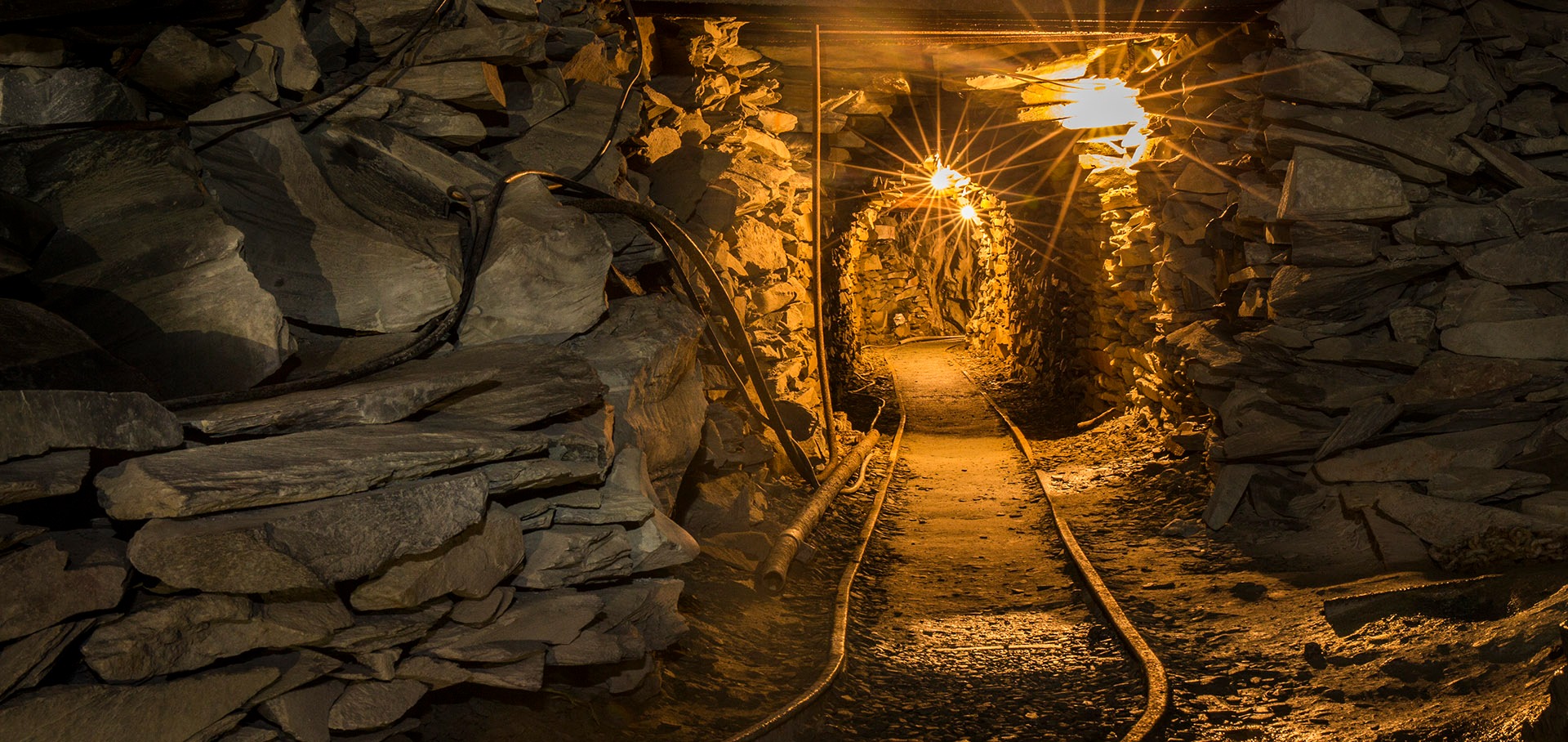
Type 260 Mining Cable Applications: Powering Continuous Miners and Longwall Shearers in Australian Operations
Introduction
The backbone of modern underground mining operations lies in the reliable delivery of electrical power to heavy machinery operating in some of the world's most challenging environments. In Australian coal mines, continuous miners and longwall shearers represent the cutting edge of extraction technology, requiring robust electrical infrastructure that can withstand extreme mechanical stress, environmental hazards, and continuous operation cycles. The Type 260 series mining cables, rated from 1.1 to 11 kilovolts, have emerged as the industry standard for powering these critical machines.
These armoured cables serve as the vital link between surface power distribution systems and underground machinery, carrying not only the substantial electrical loads required for cutting and extraction operations but also the control signals essential for modern automated mining systems. The significance of proper cable selection cannot be overstated, as cable failures in underground mining operations can result in costly production delays, safety hazards, and expensive equipment damage.
The Type 260 series represents a sophisticated engineering solution specifically designed for the unique demands of Australian mining operations. Complying with stringent Australian and New Zealand standards including AS/NZS 1802:2003, these cables incorporate advanced materials and construction techniques to address the complex challenges of underground power distribution. From the flexible copper conductors that must bend thousands of times during cable reeling operations to the galvanised steel armour that protects against mechanical damage, every component has been engineered to ensure reliable performance in the harsh underground environment.
Mechanical Machines Overview
Understanding the specific requirements of mining machinery is crucial for proper cable selection and installation. The two primary applications for Type 260 cables demonstrate the diverse challenges faced in modern mining operations.
Continuous Miner Operations
Continuous miners represent one of the most demanding applications for mining cables, combining high power requirements with extreme mobility demands. These machines operate at the coal face, using rotating cutting drums to extract material while simultaneously loading it onto conveyor systems. The operational environment presents unique challenges that directly impact cable design requirements.
The cutting operation itself requires substantial electrical power, typically ranging from several hundred kilowatts to over a megawatt, depending on the machine size and coal seam characteristics. This power must be delivered through cables that can withstand the constant movement of the machine as it advances through the coal seam. Unlike stationary equipment, continuous miners must drag their power cables behind them, creating significant mechanical stress on the cable structure.
The face-to-conveyor operation adds another layer of complexity. As the continuous miner cuts coal and loads it onto the conveyor system, the cable must accommodate not only the machine's forward progress but also the lateral movements required for proper coal extraction patterns. This three-dimensional movement pattern places extraordinary demands on cable flexibility and mechanical integrity.
Environmental conditions at the coal face compound these mechanical challenges. Coal dust, water seepage, and the presence of potentially explosive methane gas create an environment where cable integrity is not merely a matter of operational efficiency but also of safety. The Type 260 cable's construction addresses these concerns through its multi-layer protection system and compliance with explosion-proof electrical standards.
Longwall Shearer Systems
Longwall shearers represent the pinnacle of underground coal extraction technology, and their power requirements push mining cables to their operational limits. These massive machines, equipped with dual cutting drums, traverse longwall panels that can extend for hundreds of metres, extracting coal in a systematic, highly efficient manner.
The power demands of longwall shearers are extraordinary, often exceeding 1,500 kilowatts for the cutting motors alone, with additional power required for hydraulic systems, conveyor drives, and control systems. This power must be delivered through cable systems that can accommodate the shearer's continuous movement along the longwall face while maintaining electrical integrity under extreme mechanical stress.
The cable reeling and drum systems used with longwall shearers present unique engineering challenges. As the shearer moves along the longwall face, the power cable must be continuously wound and unwound from cable reels, subjecting the cable to repeated bending cycles. The Type 260 cable's pliable galvanised steel armour is specifically designed to withstand these repeated flexing operations without fatigue failure.
Deployment depths in longwall operations can exceed 300 metres below ground level, creating additional challenges related to cable weight, installation logistics, and thermal management. The cable must maintain its electrical properties under the static load of its own weight while also accommodating the dynamic loads imposed by the moving shearer.
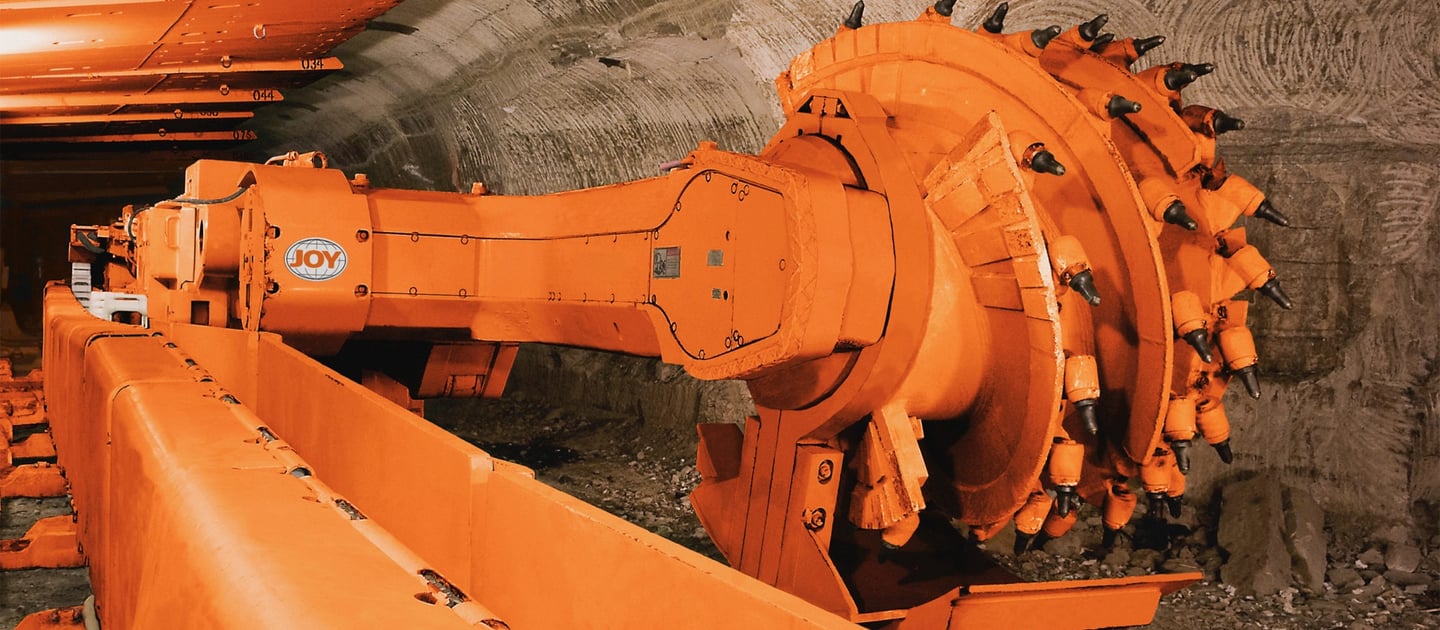

Electrical Parameters and Performance Characteristics
The electrical design of Type 260 mining cables reflects the sophisticated power distribution requirements of modern mining operations. Understanding these parameters is essential for proper system design and safe operation.
Voltage Classification and System Compatibility
The Type 260 series covers a comprehensive voltage range from 1.1 kilovolts to 11 kilovolts, accommodating the diverse electrical systems found in Australian mining operations. The 1.1 kilovolt rating suits smaller continuous miners and auxiliary equipment, while the higher voltage ratings support the massive power requirements of longwall shearers and major conveyor systems.
This voltage range aligns with the standard electrical distribution systems used in Australian mines, where medium-voltage distribution has become the norm for efficient power transmission over the substantial distances involved in underground operations. The higher voltage ratings allow for more efficient power transmission, reducing current levels and minimising voltage drop over long cable runs.
The cable's insulation system is designed to handle not only the rated voltage but also the transient overvoltages that can occur during motor starting operations and switching events. The EPR (Ethylene Propylene Rubber) insulation provides excellent dielectric properties and maintains its electrical integrity under the temperature variations and mechanical stress encountered in mining operations.
Current-Carrying Capacity and Conductor Sizing
The Type 260 series offers conductor sizes ranging from 6 square millimetres to 300 square millimetres, providing flexibility in matching cable capacity to load requirements. The flexible stranded tinned copper conductors are specifically designed to handle the high current levels associated with mining equipment while maintaining flexibility for reeling operations.
Current-carrying capacity varies significantly based on conductor size, installation method, and environmental conditions. The larger conductor sizes, such as the 300 square millimetre option, can handle currents exceeding 500 amperes under appropriate installation conditions, making them suitable for the most demanding longwall shearer applications.
The tinning of the copper conductors provides additional protection against corrosion in the humid underground environment, ensuring long-term electrical integrity. This treatment is particularly important in Australian mining conditions, where groundwater infiltration and high humidity can accelerate conductor corrosion.
Screening and Electromagnetic Compatibility
The Type 260 cable incorporates a sophisticated screening system designed to ensure reliable operation in the electrically noisy environment of mining operations. The semiconductive conductor screen, applied directly over the copper conductor, provides a smooth interface with the EPR insulation and helps to distribute electrical stress evenly across the insulation system.
The semiconductive insulation screen, applied over the EPR insulation, works in conjunction with the composite earth screen to provide comprehensive electromagnetic shielding. This multi-layer approach ensures that the cable can operate reliably in the presence of variable frequency drives, switching equipment, and other sources of electromagnetic interference commonly found in mining operations.
The composite earth screen, constructed from tinned copper braiding interwoven with polyester yarn, provides both electrical screening and mechanical protection. This design ensures continuity of the screen even under the mechanical stress of cable reeling operations, maintaining electromagnetic compatibility throughout the cable's service life.

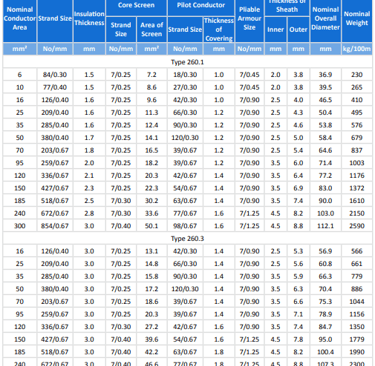
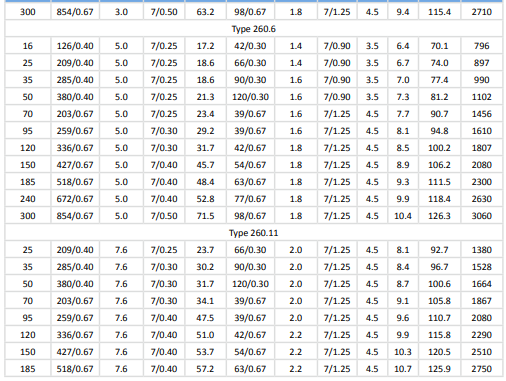

Structural Design and Construction Details
The construction of Type 260 mining cables represents a sophisticated engineering approach to the competing demands of electrical performance, mechanical protection, and operational flexibility. Each layer of the cable serves a specific purpose in ensuring reliable operation under extreme conditions.
Conductor Technology and Flexibility
The foundation of any mining cable lies in its conductor system, and the Type 260 series utilises flexible stranded tinned annealed copper conductors designed specifically for high-flex applications. The stranding pattern optimises flexibility while maintaining current-carrying capacity, with the number and size of individual strands carefully selected to provide the best balance between electrical performance and mechanical durability.
The annealing process ensures that the copper retains its flexibility even after repeated bending cycles, while the tinning provides corrosion protection that extends the cable's service life in the humid underground environment. This combination of materials and processing techniques results in conductors that can withstand the thousands of bending cycles required during cable reeling operations.
For the larger conductor sizes used in high-power applications, the stranding becomes increasingly important. The 300 square millimetre conductor, for example, utilises 854 individual strands of 0.67 millimetre diameter wire, providing the flexibility necessary for reeling operations while maintaining the current-carrying capacity required for longwall shearer applications.
Advanced Insulation System
The EPR insulation system represents state-of-the-art technology for mining cable applications. EPR provides excellent electrical properties, including high dielectric strength and low dielectric losses, while maintaining flexibility over a wide temperature range. This flexibility is crucial for mining applications where cables must operate in environments ranging from near-freezing conditions in ventilation airways to elevated temperatures near cutting equipment.
The insulation thickness varies with voltage rating and conductor size, with the Type 260.1 series utilising relatively thin insulation for 1.1 kilovolt applications, while the Type 260.11 series incorporates much thicker insulation for 11 kilovolt applications. This graduated approach ensures optimal electrical performance while minimising overall cable diameter and weight.
The semiconductive screens applied to both sides of the EPR insulation serve multiple functions. The conductor screen eliminates air gaps between the conductor and insulation, preventing partial discharge activity that could lead to insulation degradation. The insulation screen provides a smooth interface with the composite earth screen and helps to distribute electrical stress evenly across the insulation system.
Mechanical Protection Systems
The mechanical protection system of Type 260 cables represents perhaps the most critical aspect of their design for mining applications. The cradle separator, constructed from semiconductive PCP (Polychloroprene), provides both electrical and mechanical functions, separating the three main conductors while maintaining the cable's overall flexibility.
The inner sheath, typically constructed from PCP with optional CPE (Chlorinated Polyethylene) or CSP (Chlorosulfonated Polyethylene) formulations, provides the first line of mechanical protection for the conductor assembly. This sheath must be robust enough to protect the conductors from mechanical damage while remaining flexible enough to accommodate cable reeling operations.
The pliable galvanised steel armour represents the heart of the mechanical protection system. Unlike rigid steel tape armour used in some applications, the pliable armour consists of galvanised mild steel strands that can flex repeatedly without fatigue failure. This design is crucial for mining applications where cables may be reeled and unreeled thousands of times during their service life.
The outer heavy-duty sheath provides the final layer of protection against mechanical damage, chemical exposure, and environmental conditions. The PCP formulation offers excellent resistance to oils, fuels, and other chemicals commonly encountered in mining operations, while maintaining flexibility over a wide temperature range.
Pilot Conductor Integration
The three interstitial pilot conductors represent an often-overlooked but critical component of the Type 260 cable system. These EPR-covered flexible stranded copper conductors serve multiple functions in modern mining operations, from equipment monitoring and control to safety system integration.
The pilot conductors are strategically positioned within the cable structure to provide protection from mechanical damage while maintaining electrical isolation from the main power conductors. Their EPR covering ensures electrical integrity even under the mechanical stress of cable reeling operations.
In longwall shearer applications, pilot conductors often carry critical control signals for automated cutting systems, position monitoring, and safety interlocks. The reliability of these signals is essential for safe and efficient operation, making the protection and integration of pilot conductors a crucial aspect of cable design.
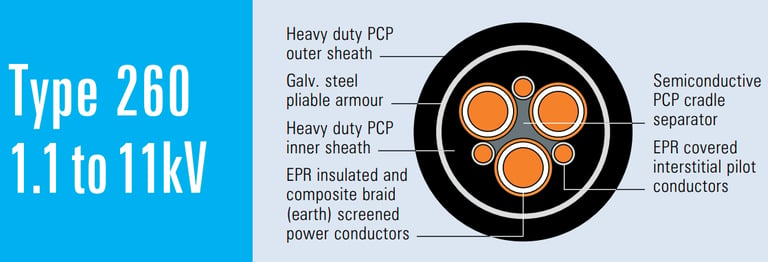

Standards and Compliance Framework
The Type 260 mining cable series is designed and manufactured to comply with a comprehensive framework of Australian and New Zealand standards that ensure safety, reliability, and performance in mining applications. Understanding these standards is crucial for proper cable selection and installation.
AS/NZS 1802:2003 Compliance
AS/NZS 1802:2003, covering reeling and trailing cables, represents the primary standard governing the design and construction of Type 260 cables. This standard establishes specific requirements for cable construction, materials, testing, and marking that ensure cables can withstand the unique demands of mining applications.
The standard addresses critical aspects such as flexibility requirements, mechanical strength, electrical performance, and environmental resistance. Compliance with AS/NZS 1802:2003 ensures that Type 260 cables can withstand the repeated bending cycles associated with cable reeling operations while maintaining electrical integrity and mechanical protection.
Testing requirements under this standard are comprehensive, covering everything from conductor flexibility testing to insulation resistance measurements under various environmental conditions. These tests ensure that cables will perform reliably throughout their intended service life, even under the extreme conditions encountered in mining operations.
Supporting Standards Framework
The Type 260 cable series also complies with additional Australian and New Zealand standards that address specific aspects of cable design and performance. AS/NZS 1125 provides guidance on cable construction and materials, while AS/NZS 3808 addresses specific aspects of mining cable applications.
AS/NZS 5000.1 covers general requirements for electrical installations, including cable selection, installation practices, and safety considerations. Compliance with this standard ensures that Type 260 cables can be properly integrated into mining electrical systems while maintaining safety and reliability.
This multi-standard approach ensures that every aspect of cable design, from individual component materials to overall system integration, meets the stringent requirements of the Australian mining industry. The comprehensive nature of this standards framework provides confidence that Type 260 cables will perform reliably in the demanding mining environment.
Cable Selection and Dimensional Considerations
Proper selection of Type 260 mining cables requires careful consideration of multiple factors, including electrical requirements, mechanical demands, and environmental conditions. The extensive range of available sizes and configurations allows for optimised selection for specific applications.
Conductor Size Selection
The selection of appropriate conductor size involves balancing several competing factors: current-carrying capacity, voltage drop, mechanical strength, and cable flexibility. For continuous miner applications, conductor sizes typically range from 35 to 120 square millimetres, providing adequate current capacity while maintaining the flexibility necessary for frequent cable movement.
Longwall shearer applications often require the largest available conductor sizes, with 185 to 300 square millimetre conductors being common for primary power feeds. These large conductors provide the current-carrying capacity necessary for high-power cutting operations while maintaining acceptable voltage drop over long cable runs.
The relationship between conductor size and cable weight becomes critical in mining applications. The 300 square millimetre Type 260.11 cable weighs approximately 2,750 kilograms per 100 metres, requiring careful consideration of cable handling equipment and installation methods. This weight consideration often influences the decision between using fewer large cables or multiple smaller cables for high-power applications.
Cable Type Selection
The Type 260 series offers four main variants, each optimised for specific voltage and application requirements. Type 260.1, with its thinner insulation, is suitable for 1.1 kilovolt applications and provides the most compact cable design. This variant is often selected for auxiliary equipment and smaller continuous miners where space constraints are a concern.
Type 260.3 and Type 260.6 provide intermediate insulation thickness suitable for 3.3 and 6.6 kilovolt applications respectively. These variants represent the most common selections for medium-voltage mining applications, offering a good balance between electrical performance and mechanical characteristics.
Type 260.11, with its thick insulation system, is designed for 11 kilovolt applications and is typically selected for major power distribution systems and large longwall shearer installations. While this variant results in larger, heavier cables, it provides the electrical performance necessary for high-voltage mining applications.
Dimensional Impact on Installation
The overall diameter of Type 260 cables varies significantly with conductor size and voltage rating, ranging from approximately 37 millimetres for the smallest configurations to over 126 millimetres for the largest. These dimensional variations have significant implications for cable installation, requiring appropriate cable management systems and reeling equipment.
Cable reeling systems must be sized to accommodate not only the cable diameter but also the bending radius requirements. The pliable armour construction of Type 260 cables allows for relatively tight bending radii compared to rigid armoured cables, but proper installation practices must still be followed to ensure long-term reliability.
The weight progression from small to large conductor sizes also impacts installation logistics. While the 6 square millimetre Type 260.1 cable weighs only 230 kilograms per 100 metres, the largest configurations can exceed 3,000 kilograms per 100 metres, requiring heavy-duty handling equipment and careful planning for underground installation.

Frequently Asked Questions: Mining Challenges and Solutions
The harsh conditions and demanding applications of mining operations present unique challenges that must be addressed through proper cable selection, installation, and maintenance practices. Understanding these challenges and their solutions is crucial for reliable mining operations.
Mechanical Damage Prevention and Mitigation
One of the most common challenges in mining cable applications is mechanical damage from contact with mining equipment, conveyor systems, and rough underground surfaces. The continuous movement of cables in mining operations creates multiple opportunities for mechanical damage that can lead to cable failure and costly downtime.
The Type 260 cable addresses this challenge through its multi-layer protection system. The galvanised steel armour provides excellent resistance to crushing and impact damage, while the heavy-duty outer sheath protects against abrasion and chemical exposure. The pliable nature of the armour ensures that protection is maintained even during cable reeling operations, where rigid armour systems might crack or separate.
Proper cable installation practices are equally important in preventing mechanical damage. Cable routes should be planned to minimise contact with moving equipment, and adequate cable supports should be provided to prevent excessive tension or bending. Where cable contact with equipment is unavoidable, protective sleeves or guards should be installed to prevent damage.
Regular inspection protocols should be established to identify potential mechanical damage before it leads to cable failure. Visual inspection of the outer sheath can reveal signs of abrasion, cuts, or other damage that might compromise cable integrity. The pilot conductors in Type 260 cables can also be used for continuous monitoring of cable condition, providing early warning of potential problems.
Managing Voltage Drop Over Extended Cable Runs
Voltage drop is a critical consideration in mining applications, where cable runs can extend for hundreds of metres from power sources to equipment locations. Excessive voltage drop can lead to poor equipment performance, increased energy consumption, and potential damage to sensitive electronic systems.
The Type 260 cable series addresses voltage drop concerns through its range of conductor sizes and the use of efficient conductor materials. The tinned copper conductors provide excellent conductivity, while the range of available sizes allows for selection of appropriate conductor capacity for specific applications.
Proper voltage drop calculations should consider not only the steady-state current requirements but also the starting currents of large motors. Mining equipment often incorporates multiple high-power motors that may start simultaneously, creating temporary high-current conditions that can cause significant voltage drop if not properly considered in cable selection.
The pilot conductors in Type 260 cables can be utilised for voltage monitoring at equipment locations, providing real-time feedback on system performance and enabling optimisation of cable selection and installation practices. This monitoring capability is particularly valuable in longwall operations where cable length varies as the shearer moves along the face.
Insulation Integrity in Harsh Environments
The underground mining environment presents multiple challenges to cable insulation systems, including high humidity, chemical exposure, temperature variations, and mechanical stress. Insulation degradation can lead to ground faults, short circuits, and potentially dangerous electrical hazards.
The EPR insulation system used in Type 260 cables provides excellent resistance to these environmental challenges. EPR maintains its electrical properties over a wide temperature range and provides good resistance to moisture and chemical exposure. The semiconductive screens help to distribute electrical stress evenly, preventing localised degradation that could lead to insulation failure.
However, proper installation and maintenance practices are essential to ensure long-term insulation integrity. Cable terminations and joints represent particular vulnerability points where moisture or contaminants can enter the cable system. Proper sealing and regular inspection of these connection points is crucial for maintaining system reliability.
Insulation resistance testing should be performed regularly to monitor the condition of the insulation system. This testing can identify degradation trends before they lead to cable failure, allowing for proactive maintenance or replacement. The pilot conductors can also be used for continuous insulation monitoring, providing ongoing assessment of cable condition.
Cable Fatigue from Repeated Flexing
The repeated bending and flexing associated with cable reeling operations in mining applications can lead to fatigue failure of cable components. This is particularly challenging for cables used with continuous miners and longwall shearers, where thousands of bending cycles may occur during the cable's service life.
The Type 260 cable design specifically addresses fatigue concerns through its flexible conductor construction and pliable armour system. The conductor stranding pattern is optimised for high-flex applications, while the galvanised steel armour strands can accommodate repeated bending without failure.
Proper cable handling and reeling practices are essential for minimising fatigue-related failures. Cable reeling systems should be designed to maintain appropriate bending radii and to avoid reverse bending that can accelerate fatigue. Regular inspection of cable condition near reel connections can identify early signs of fatigue damage.
The pilot conductors serve as an early warning system for fatigue-related problems. Since these smaller conductors are more susceptible to fatigue damage than the main power conductors, monitoring their continuity can provide advance warning of potential cable problems before they affect the main power circuits.
Pilot Conductor Signal Integrity
Modern mining equipment relies heavily on electronic control systems that require reliable communication between equipment and control centres. The pilot conductors in Type 260 cables carry these critical control signals, and maintaining signal integrity is essential for safe and efficient operation.
Signal integrity can be compromised by electromagnetic interference from the high-power circuits in the same cable, mechanical damage to the pilot conductors, or environmental factors such as moisture ingress. The Type 260 cable design addresses these concerns through proper shielding, physical protection of the pilot conductors, and the use of appropriate insulation materials.
Proper installation practices are crucial for maintaining signal integrity. Pilot conductor terminations should be made with appropriate connectors and proper shielding techniques. Signal cables should be routed to minimise exposure to sources of electromagnetic interference, and regular testing should be performed to verify signal quality.
The use of digital communication protocols can help maintain signal integrity even in the presence of some interference or minor conductor degradation. However, the physical integrity of the pilot conductors remains crucial for reliable operation, making proper cable selection and installation practices essential.
Ensuring Compliance and Avoiding Counterfeit Products
The critical nature of mining operations makes the use of compliant, high-quality cables essential for safety and reliability. Unfortunately, the mining industry has experienced problems with counterfeit or substandard cables that may not meet the required safety and performance standards.
Ensuring compliance begins with proper cable specification and procurement practices. All Type 260 cables should be clearly marked with appropriate standards compliance information, including AS/NZS 1802:2003 certification. Cables should be purchased from reputable suppliers who can provide documentation of compliance testing and certification.
Regular inspection of cable markings and documentation can help identify potential counterfeit products. Cables that lack proper marking, have inconsistent construction, or are offered at unusually low prices should be viewed with suspicion. The consequences of cable failure in mining operations make the small additional cost of verified compliant cables a worthwhile investment.
Third-party testing and certification provide additional assurance of cable compliance and performance. Independent testing laboratories can verify that cables meet the required standards and performance specifications, providing confidence in cable selection and installation decisions.
Conclusion and Best Practices
The Type 260 mining cable series represents a sophisticated engineering solution to the complex challenges of underground power distribution in Australian mining operations. From the flexible copper conductors that accommodate thousands of reeling cycles to the galvanised steel armour that protects against mechanical damage, every aspect of these cables has been designed to ensure reliable operation in the harsh mining environment.
The comprehensive range of conductor sizes and voltage ratings allows for optimised cable selection for specific applications, whether powering a small continuous miner or a massive longwall shearer. The compliance with Australian and New Zealand standards ensures that these cables meet the stringent safety and performance requirements of the mining industry.
However, the selection of appropriate cable specifications is only the first step in ensuring reliable mining operations. Proper installation practices, regular maintenance, and ongoing monitoring are equally important for long-term system reliability. The pilot conductors integrated into Type 260 cables provide valuable capabilities for system monitoring and early fault detection, but these capabilities must be utilised effectively to realise their full benefit.
The investment in high-quality, compliant mining cables represents a small fraction of the total cost of mining operations, but the impact on operational reliability and safety is substantial. Cable failures can result in costly production delays, safety hazards, and expensive equipment damage, making proper cable selection and maintenance practices essential for successful mining operations.
As mining operations continue to evolve towards greater automation and higher power requirements, the demands on cable systems will only increase. The Type 260 cable series provides a robust foundation for these evolving requirements, but ongoing attention to proper selection, installation, and maintenance practices will remain crucial for ensuring reliable operation in the challenging mining environment.
Regular inspection schedules should be established to monitor cable condition and identify potential problems before they lead to failures. Visual inspection of cable sheaths, testing of insulation resistance, and monitoring of pilot conductor continuity provide multiple layers of condition assessment that can prevent costly failures and ensure safe operation.
The future of mining operations depends on reliable electrical infrastructure, and the Type 260 mining cable series provides the foundation for this reliability. By understanding the unique challenges of mining applications and implementing appropriate solutions, mining operations can achieve the safety, efficiency, and reliability essential for success in today's competitive mining environment.


